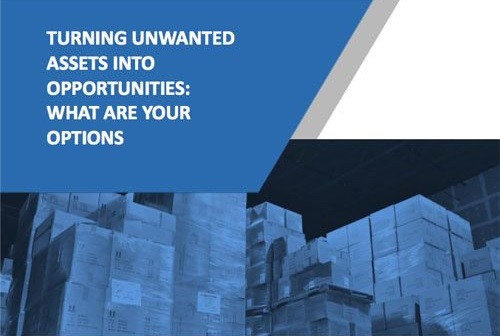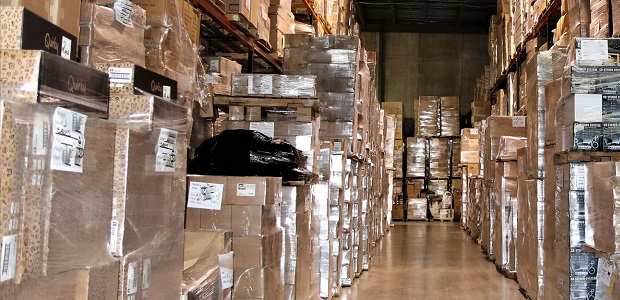* – This article has been archived and is no longer updated by our editorial team –
Net Trade helps middle market companies optimize the return from unwanted assets or excess capacity. Below is our recent interview with David Prose, Managing Partner at Net Trade:

Q: David, tell us something more about your company, and what you do?
A: What we do is often referred to as corporate barter or corporate trade: we offer best-in-class advertising services as currency in exchange for helping mid-sized businesses quickly and efficiently part with unwanted assets. Whether those assets are excess inventory, machinery, unused capacity or something bigger or smaller, we can help move those assets without upsetting a company’s current channels or partners. What sets us apart is that we work exclusively for the middle market, offering them the same level of service and expertise that’s usually reserved for the Fortune 500.
Q: Can you give us insights into your services?
A: As mentioned, we purchase a client’s problem assets as a principal, not a broker, and we are responsible for warehousing and moving the unwanted assets. We have experience finding brand-safe solutions for everything from car parts to frozen chicken breasts! We really can find a solution for just about any problem asset.
Most of our clients follow three basic paths to manage unwanted assets.
• Cash Liquidation
• Donation
• Corporate Trade
These options are not mutually exclusive; often, a combination of options is the best solution. We help our clients determine their best choices based on market conditions, the specific asset to be sold, and the time and costs compared to the estimated return.
Our core business, and what most of our clients pursue, is corporate trade. We’ll purchase a client’s entire inventory of unwanted assets, paying up to the full value for the challenged assets. Typically, we offer a combination of cash and trade credit in exchange for those assets. For redemption of those trade credits, Net Trade delivers a full range of media and advertising services, including traditional media, like newspaper, radio and billboards. Our expertise though is in digital media. We work with award-winning partners who deliver measurable ROI through programmatic advertising channels that include display, video, mobile, social and search. These data-driven advertising solutions are traditionally reserved for national brands with huge media budgets, but through our partnerships, we’re able to offer these premium services to our clients.
Most Net Trade clients focus on performance marketing. They’re not just running ads to deliver a specific number of rating points; they are focused on a Return on Advertising Spend (ROAS) and a specific goal for Return on Investment (ROI).
Q: What do you do with the unwanted assets?
A: We purchase our clients unwanted assets or excess capacity and then we market those assets or capacity into approved secondary channels that deliver positive results – without competing with current distribution channels.
Typically, we’re asked to resell the assets into secondary channels, which have been approved in advance by the client. We have a huge warehouse, where we can store truckloads of goods, whether they’re perishable, dry or white goods. We’ve had everything from disposable cameras to turbine engines. Whatever they are, we can take possession and store them appropriately. We can repackage, if needed, or remove branded labeling to get items to market more easily.
We inform the client early in the review process of the channels that will be employed and how those channels will protect the client’s distribution channels. We make every effort to offer channels that the client may not have considered, such as closed distribution systems (company stores), export channels or repacking the product (such as a brown box program) to protect the client’s distribution channels.
Our goal is to prevent disruption with the client’s in-line retailers. It is not just a sale into unapproved channels that can impact a client, but an offer of product into the wrong channel can cause issues.
We want our clients to get the best price for their assets with no disruption to their regular distribution channels – that’s always our goal.
Q: What is the biggest challenge you’ve faced in your business and how did you overcome it?
A: Fifteen years ago, we purchased a large inventory of household products. The manufacturer required that the product be sold into export channels to avoid any disruption in the US market place. The inventory was worth significantly less in export markets. The client was able to recover the full value through our trade program. The inventory was sold into approved export channels. Unbeknownst to us, the exporter turned around and sold the inventory back into the US. We may not have violated the contract terms, but we certainly had a client that faced a major issue with its US retail partners. We ended up purchasing the entire inventory off the shelves of a large US closeout retailer. Protecting our client’s distribution channel was more important to us than the money we lost in the transaction. We ended up destroying the product and taking a significant loss.
We learned a valuable lesson about managing your export partners. We also learned how to protect our clients by demanding certain legal remedies and insuring that the export buyer requires the same protections from their customers. Additionally, we learned that we need to understand the cost of freight compared to the value of the inventory, as some products can be very valuable and easy to export – and then return to the US market.
We see similar issues with internet sales in today’s market place.
 Recommended: Bold Penguin Helps Commercial Insurance Agents, Carriers, And Tech-First Organizations To Write Commercial Insurance
Recommended: Bold Penguin Helps Commercial Insurance Agents, Carriers, And Tech-First Organizations To Write Commercial Insurance
Q: What can we expect from Net Trade in the future?
A: I honestly don’t see our business model changing dramatically. If anything, we’d just like to get bigger, so we can help more clients, and so we can take more aggressive media positions on their behalf.
Our business model will not change in the future. Our clients still have inventory and underperforming asset issues. We believe that the secondary market is more challenging now than 10-15 years ago. Internet sales and the consolidation of secondary retailers has reduced the number of outlets available to a client and increased the risk of sales that could negatively impact in-line sales. Client have reduced their sales staff and in some cases they no longer have sales personnel responsible for handling slow moving inventory into secondary channels. Our services will be more valuable in the future.
Activate Social Media:


 Recommended:
Recommended: 